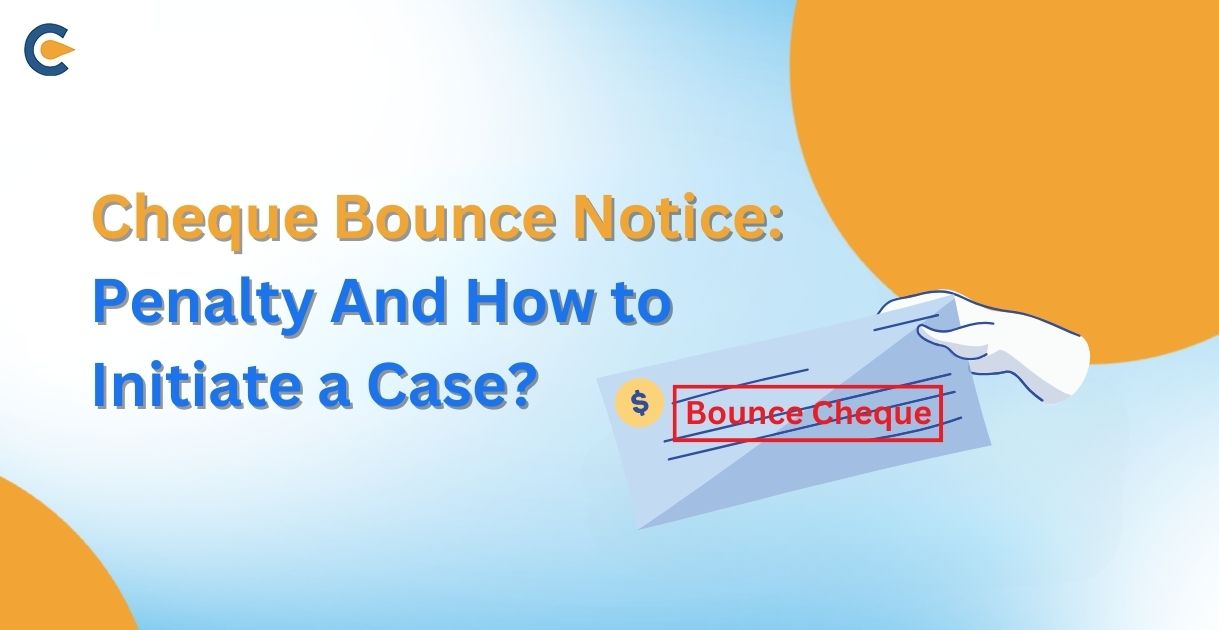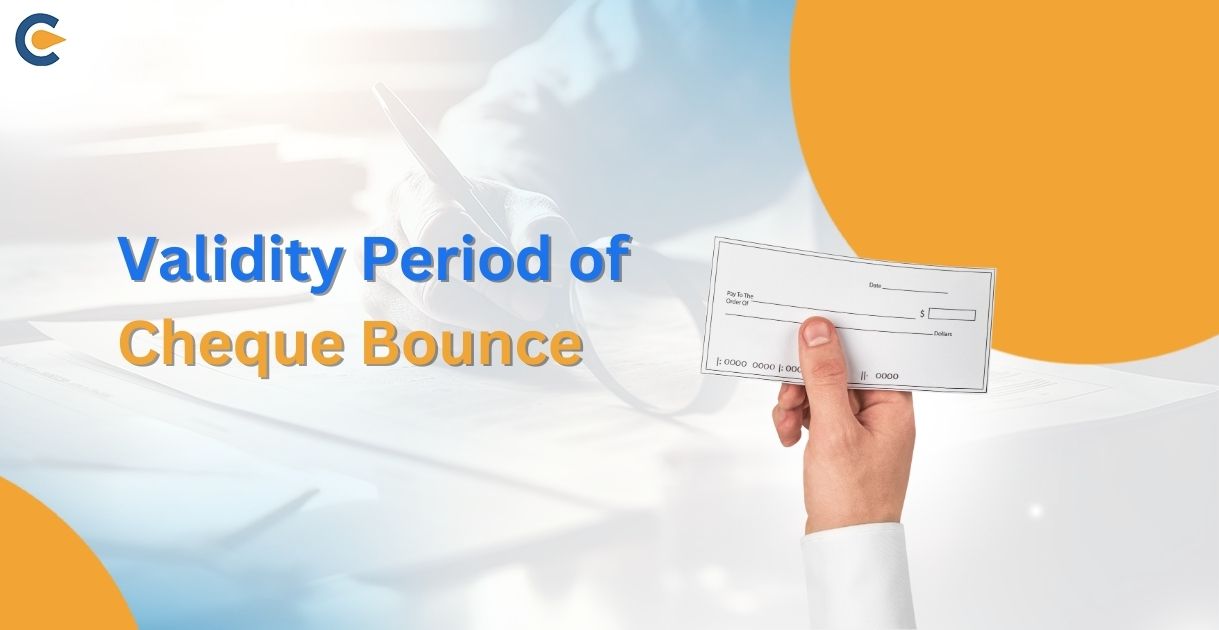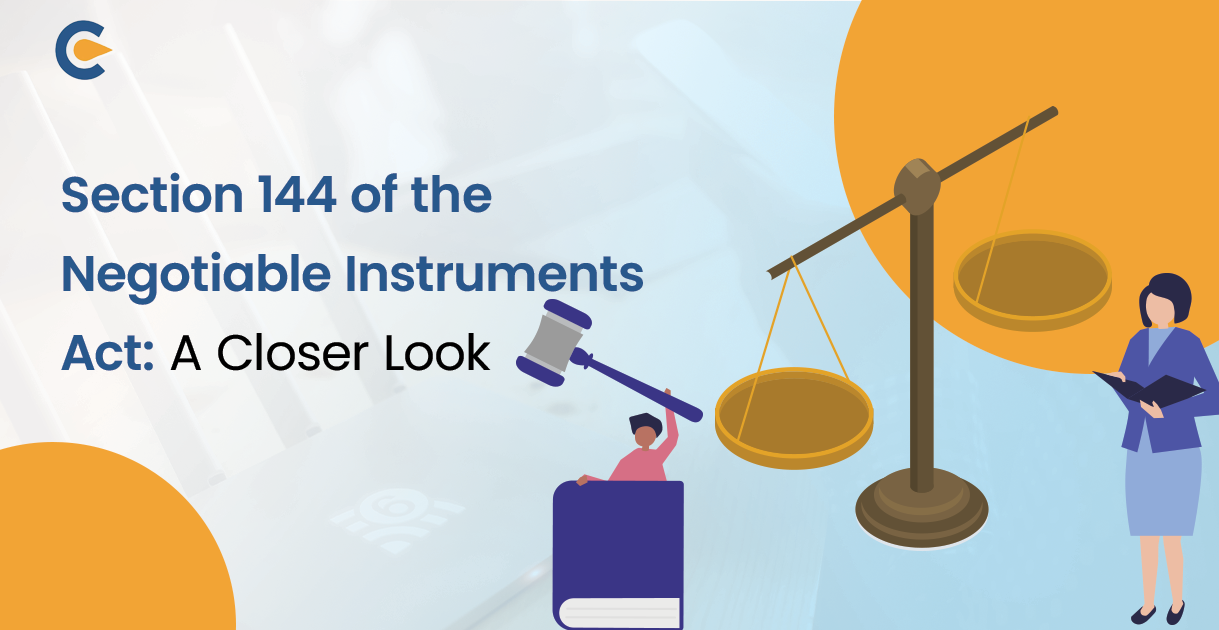The issuer of the chequemay receive a bounced cheque notice, which indicates that there were insufficient funds in your bank. The individual attempting to cash the cheque will not be paid the money they are owed, and the person who wrote the cheque may be subject to fines or penalties. You can file a case to try to resolve the issue if this occurs. This entails taking specific actions to attempt to recover the money that is due to you. This will assist you in comprehending the consequences of a cheque bounce, the issues it may raise, and your options for resolution. Even if, after the Cheque Bounce notice, the drawer fails to pay the amount of the cheque, then the payee can take legal action and learn how to initiate a cheque bounce case.
What is a Cheque Bounce Notice?
A cheque bounce notice is a written communication done by the payee to the drawer when the payment promised through the cheque couldn’t be made to the payee due to insufficient funds in the account of the drawer. The contents of this cheque bounce notice include the date when the cheque was presented in the bank, the cheque number mentioned in the cheque, the amount of which the cheque was issued, the bank charges that might be accrued when the cheque was returned due to insufficient funds, or any other important details. It is sent to the drawer to get their attention about the lapsed payment and its timely payment. The notice served also states that if the drawer denies the payment, then the payee can take appropriate measures to get his money back, like filing a criminal case or even initiating a cheque bounce case against the drawer in accordance with section 138 of the Negotiable Instruments Act 1881.
Penalty for Cheque Bounce
The penalty for cheque bounce could include imprisonment, fine, or even both. The offence is charged as a criminal offence under section 138 of the Negotiable Instruments Act 1881.The penalty for cheque bounce if the drawer is found guilty may include –
- An imprisonment of up to two years;
- A fine of the amount deemed fit by the court and it can go up to twice the amount of the cheque;
- If the drawer is a habitual offender of such acts, then the bank may even close his bank accounts or cancel the chequebook for further use;
- The bank may demand fines from both the drawer and payee for the loss of the bank’s time, efforts, and convenience;
Required documents to initiate a cheque bounce case
If you ask an advocate about how to initiate a cheque bounce case, he/ she will first ask you about the documents required to file a case. These necessary documents are –
- The original cheque which was given to the payee by the drawer.
- The payee must have received a return memo of the cheque from the bank where the reason for such return would be mentioned (must be insufficient funds).
- Copies of the receipt and the original demand notice which was served to the drawer by the payee for the cheque bounce.
- Additionally, an affidavit needs to be submitted stating the genuineness of the evidence.
How to initiate a cheque bounce case
You can see how to initiate a cheque bounce case here –
- When the cheque gets returned from the bank without payment, then the payee of the cheque should send a cheque bounce notice to the drawer within 30 days of such bounce. This notice should be sent to the drawer’s address, place of business, and place of work through registered post and mail. The content of the notice should contain essential details about the cheque, like the value of the cheque, the reason for a bounce in payment, the deposit date of the cheque in the bank, and the date when the cheque was bounced.
- The other essential thing that a cheque bounce notice must contain is the payee’s request to the drawer to make the payment within the next 15 days; otherwise, legal action may be taken against him.
- If the drawer fails to pay the mentioned amount for which the got bounced within the next 15 days to the payee, in this situation, the payee can initiate a criminal case under section 138 of the Negotiable Instruments Act against the drawer within 30 days after the completion of 15 days period given for making payment.
- The case can be filed in the court having territorial as well as pecuniary jurisdiction over the matter. The cheque bounce notice, along with other relevant documents, needs to be submitted.
- After conducting the first hearing, the court can issue a summon against the drawer as per Section 138 of the Negotiable Instruments Act if the court accepts the matter.
- The summoned person or entity needs to appear before the court in the next hearing with their defence.
This is the way to initiate the cheque bounce case against the drawer of the cheque. If found guilty, the court can issue a penalty for cheque bounce, thereby asking to make up to double the amount of payment as was mentioned in the cheque, can imprison the drawer for a maximum of 2 years, can ask to pay the cost of proceedings to the payee, etc. The court can also ask the drawer to pay a fine to the bank for wasting their efforts and time.
Conclusion
Cheque bounce is considered to be a serious offence in our country, and the drawer can even be punished with imprisonment. If anyone receives a cheque bounce notice, it must be taken seriously, and the payment should be made to the payee to avoid legal complications and fines. With globalization and growing businesses, the payments made through cheques are increasing day by day, and hence, there is an increase in cases of cheque bounce. However, the criminal case can be initiated only if the reason for the cheque bounce is a lack of funds in the drawer’s account. A Cheque bounce notice serves as an intimation to the drawer informing him about such a thing, and failure to make such payment may involve a criminal complaint.
If you are suffering from a cheque bounce issue, then you can contact Corpbiz and get to know how to initiate a cheque bounce case with assistance from our team. We can help you in this case by helping you send the cheque bounce notice and follow the steps thereafter. We have experienced individuals who can help you deal with this case with ample care and success.
Frequently Asked Questions
What is meant by a memo of cheque return?
A memo of cheque bounce contains the details by the bank that includes the communication of cheque bounce stating the reason why the cheque couldn’t be paid.
What are the documents needed to submit to the court to file a cheque bounce complaint?
The documents needed to proceed to file a cheque bounce complaint in the court are as follows –
· The original cheque which was given to the payee by the drawer.
· The payee must have received a return memo of the cheque from the bank where the reason for such return would be mentioned (must be insufficient funds).
· Copies of the receipt and the original demand notice which was served to the drawer by the payee for the cheque bounce.
· Additionally, an affidavit needs to be submitted stating the genuineness of the evidence.What are the contents of a cheque bounce notice?
The contents of this cheque bounce notice include the date when the cheque was presented in the bank, the cheque number mentioned in the cheque, the amount of which the cheque was issued, the bank charges that might be accrued when the cheque was returned due to insufficient funds, or any other important details.
What can happen if the accuseddoesn’t appear on the hearing date?
If the accused doesn't appear on the date of the hearing, then the court can grant a new date to appear, but if this happens again, then the court can issue a bailable warrant against the accused and get him arrested.
Is an advocate necessary to send a cheque bounce notice?
No, it is not necessary to take an advocate's help to send a cheque bounce notice, but it should be ensured that the contents of the notice contain all the important details that should be mentioned. This demand notice is of much importance in the case when the payee moves to court for help. It is advisable to get help from an advocate or a legal community like us as it is a very important part of a criminal case.
What is the best way to avoid prosecution in a cheque bounce case?
The way to avoid prosecution in a cheque bounce case is to prove that the cheque presented to the payee was not to clear the debts or make the payments; rather, it was merely a security deposit.
When can a person file a cheque bounce case?
A cheque bounce case can be filed in the court after sending the demand notice to the drawer. The duration in which the case is filed will be 30 days after the 15 days mentioned in the demand notice for making the payment.
Can we get bail in a cheque bounce case?
Yes, we can get bail in a cheque bounce case since it is a bailable warrant. However, the accused has to submit a surety bond/ bail bond of a specific amount to the court and should attend all the succeeding court hearings from thereon.
Is it necessary to file a police complaint in a cheque bounce case?
No, the complainant doesn't need to file a police complaint to go through the cheque bounce case. The complainant has to file a written complaint to the magistrate as per section 142 of the Negotiable Instruments Act to initiate a cheque bounce case.
Which type of case is cheque bounce?
A cheque bounce is a criminal offence as per the Negotiable Instruments Act 1881. However, the complainant can decide if he/ she has to file a civil suit or a criminal case against the accused. Relief is faster in filing criminal cases under section 138 of the Negotiable Instruments Act; hence, most complainants proceed through criminal cases.
Read Our Article: What Is The Validity Period Of Cheque Bounce?











